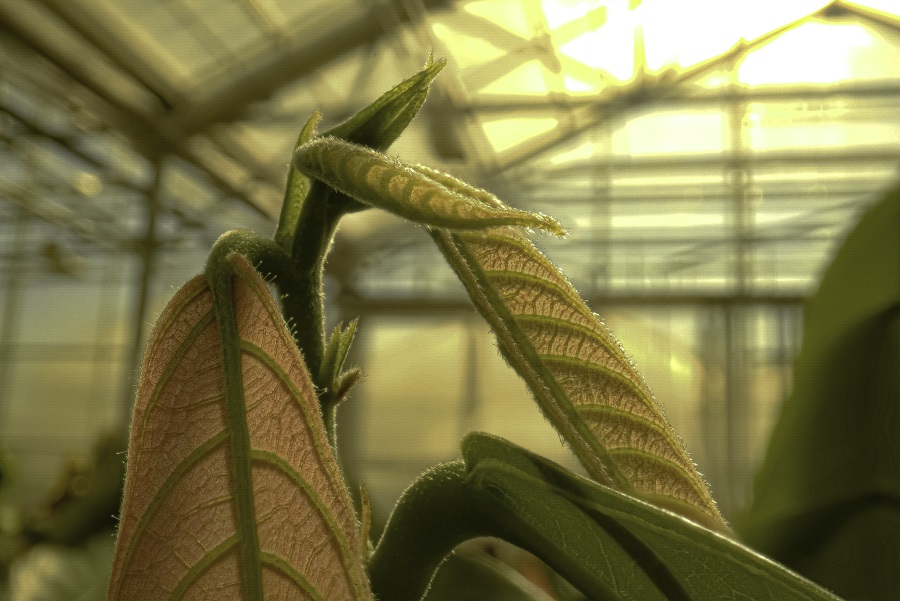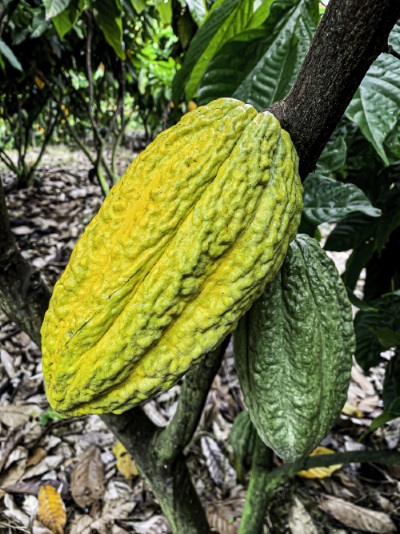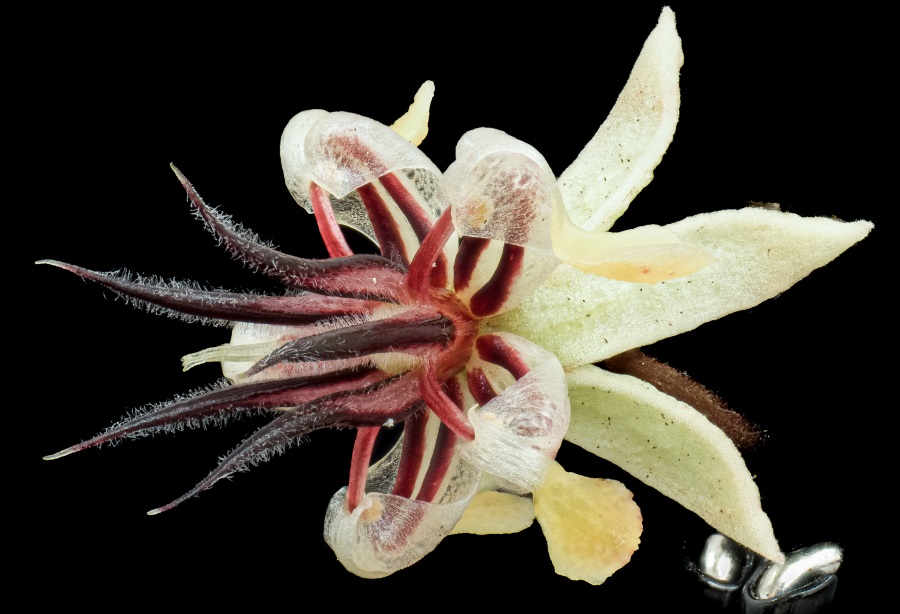Candy Industry Senior Editor Liz Parker was recently able to connect with Ashley Duval, senior scientist, Mars Wrigley, to chat about her job, which includes pollinating cocoa crops by hand—all to ensure cocoa remains sustainable and consumers have enough chocolate for years to come.
Day-to-day, Duval works with her team to optimize and innovate in the cocoa nursery. She and her team maintain a 30,000 square feet of cacao greenhouses for research and breeding, which includes pollinating flowers of the cocoa tree by hand to produce the next generation of cocoa trees to help farmers thrive.
It’s a delicate and rigorous process—while chocolate is an indulgent treat, the cocoa crop is notoriously fragile and is constantly under threat, susceptible to pests and disease which result in an estimated 40% of cocoa yield loss each year.
Liz Parker: How can humans pollinate crops, specifically cocoa crops which develop into chocolate?
Ashley Duval: Pollination is an incredibly important ecosystem service for the production of chocolate. The cacao tree produces hundreds to thousands of flowers but it is estimated that fewer than 1% of these will become pods—there are many things that have to go right along the way for a flower to develop into a pod. The tiny cacao flowers can be pollinated by hand, especially with the help of some tweezers, but fortunately for all of the chocolate enthusiasts of the world, there are a variety of tiny insects who have taken on the responsibility for most of the natural pollination that occurs around the world.
Not all cacao trees are self compatible, meaning that sometimes a pollination does not produce a fruit. This can lead to less production and lower profits for farmers. One of the traits that science has helped our understanding of is the ability of a tree to pollinate itself, an essential trait for improving productivity and farmer income. This is just one example of some of the groundbreaking research we have developed over the past 40 years to develop cocoa trees that deliver on the promise of Cocoa for Generations, Mars’ global strategy creating a cocoa supply chain where human rights are respected, the environment is protected and everyone, especially cocoa farmers, has the opportunity to thrive.

LP: What is your background—how did you end up being a cocoa pollinator?
AD: Chocolate and botany have both been lifelong passions of mine, but it never occurred to me that I could someday make a career out of studying and breeding cacao trees. I have a background in ethnobotany (the study of how people of a particular culture and region make use of native plants) and forest management. Before joining Mars in 2015, my work focused on the relationship between people and plants, particularly trees. I learned about the work being done by Mars scientists to sequence the cacao genome and the possibilities it would unlock for research on cacao, and I was instantly fascinated. How could it be that a tree with a 5,000-year history of use by humans that’s cultivated in so many countries around the world could still be so vulnerable?
I joined the Mars Science and Technology team and earned my PhD with a dissertation on cacao, using new tools and data to decipher mysteries of the cacao crop. Four years ago, I moved to Davis, CA to help populate brand new greenhouses at UC Davis with a world class germplasm collection and help develop the tools and pipelines to conserve, study, and futureproof cacao against the many threats of a changing world.
LP: What sort of work is involved in maintaining a cocoa nursery?
AD: Nurseries are important for producing healthy plants, whether it be for research like ours or distribution to farmers. Our greenhouses serve not simply the function of a nursery, but also act as a teaching lab, a research greenhouse, and a breeding accelerator all under one roof.
Cacao trees are native to the Amazon rainforest, so to maintain a thriving collection of plants here in Northern California, we rely on sophisticated environmental controls that can mirror conditions the tree might experience in the tropics. This means stabilizing the extreme shifts in outside temperature between the winter and summer months through heating and cooling, as well as adjusting light exposure during the year. Our collection is genetically diverse, and different plants have different needs. Our management can be compared to a form of personalized medicine for plants, and understanding the different requirements different trees might have. To accomplish this, we rely on various sensors and instruments that provide a lens into what the plant is experiencing. Just as a physician performs screens and measurements during a physical exam, we are able to monitor growth rates, water use, chemical fingerprints and nutrient composition of plants to track health over time.
Looking back across nearly a century of cacao research, we see that many of the challenges researchers faced back then are still issues for the crop today. However, we’re now equipped with tools and technologies that bring answers within our grasp. By leveraging over two decades of molecular tools, we can now better understand the genetic potential of a tree from the very first leaf it puts out. This research includes understanding how the plants respond to stress, and how we can grow healthier, more resilient trees capable of thriving under a broader range of environmental conditions.
 LP: How does the nursery get protected against pests and disease?
LP: How does the nursery get protected against pests and disease?
AD: It is important to maintain an environment that is free of pests and diseases in our greenhouses. The most important step in this process is prevention, which we achieve through a quarantine stage. Imported material is isolated in a quarantine facility and deemed to be disease free before the plants arrive to our greenhouse. We have a number of best practices including scouting and monitoring, spray rotations, and biological controls, that help us maintain an environment free of pests and diseases.
We are also doing work and research right here in our greenhouses that can help protect farmer’s fields against pests and disease. Our work to futureproof cacao through breeding and research means that we are no longer reactive, but proactive—searching for traits that can help to combat climate conditions, pests, and diseases that will be relevant 50 years from now. We use data from our research trials to predict how individual trees might respond to pests and pathogens they have not yet encountered, and safeguard against future threats.
Additionally, our work at this facility has helped us to address some of the challenges farmers face through the development of several new technologies, including a groundbreaking new app that can determine the health of a cacao tree at the touch of a button and a diagnostic test kit that will help stop the spread of devastating diseases. The easy-to-use Virus Rapid Detection Kit (developed in partnership with SwissDeCode) identifies the cacao swollen shoot disease (CSSD) in asymptomatic cocoa plants in just 60 minutes. This is a significant development in helping prevent spread and reduce negative impact to the broader crop. It is also a clear demonstration of Mars’ commitment to address the critical issues facing our world—and its inhabitants—head on.
LP: What kind of genetic diversity is there in cocoa?
AD: Genetic diversity makes up the source code for the variety we see in nature, but often the value of genetic diversity is hidden to the naked eye. Genetic diversity allows for the discovery and utilization of traits that will make cacao resilient under different conditions. We have only just begun to understand and utilize the genetic diversity present in cacao for breeding, which makes it especially exciting to work on. Cacao breeding is in its infancy compared to most of the world’s established fruit and nut crops, and there is incredible opportunity to grow cacao more efficiently and sustainably by harnessing the power of science. Our collection houses hundreds of plants representing about 80% of the genetic diversity found in cocoa. Some of the plants were collected decades ago from the wild and now only exist in cultivation and many of them have barely been explored for the unique traits and adaptations they might possess. Having access to living specimens growing under the same conditions here unlocks unlimited potential for screening and breeding better plants for the future.
This capability to learn and generate new insights that can be used to create better plants and more sustainable production systems is what makes our work so unique. Through these learnings, we’re able to train and equip the next generation of cacao scientists and researchers through courses, lectures, tours and mentorship. Our greenhouse doesn’t just grow trees; we’re growing a research and breeding ecosystem capable of generating visibility and opportunity for the cacao tree, for cocoa farmers and for the cocoa supply chain. These insights are vital to ensuring the future of cocoa.

LP: What’s new for the cocoa nursery in 2023, or anything planned for 2024?
AD: We are excited to continue our work this year in conserving and characterizing cacao genetic diversity, and applying these insights to accelerate breeding for climate smart cacao. This year we plan to further our insights in plant water relations and screening methods to identify more resilient material, including cacao rootstocks. We are exploring innovations in the way that cacao is grown and propagated, and translating greenhouse discoveries into tools that can help farmers. There are many other exciting things on the horizon for cacao at our Plant Science Hub in Davis (CA), so we hope you’ll stay posted!




